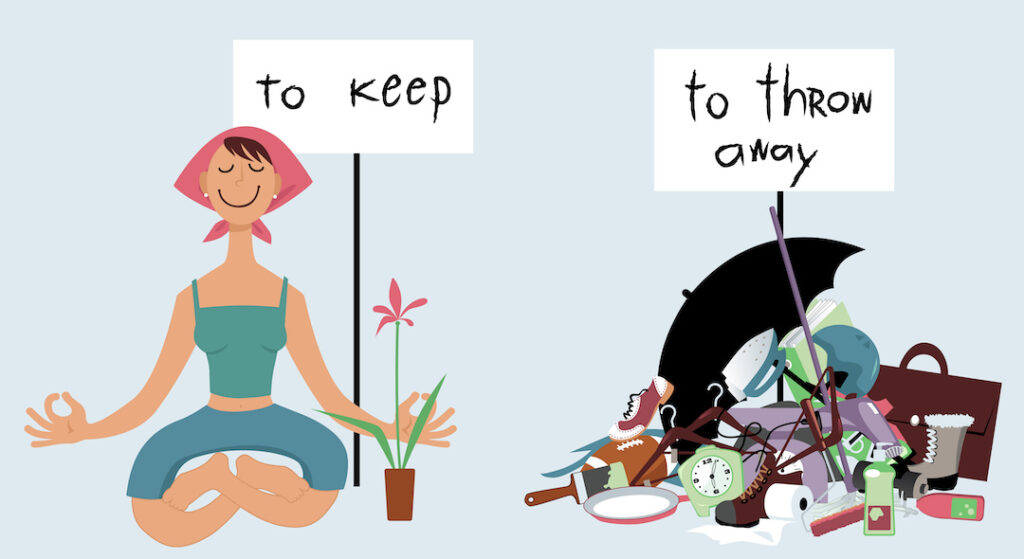Perhaps it was my mother’s packrat tendencies, or maybe it was the tidal wave of stuffed pigs and bohemian candle-holders that engulfed my teenage bedroom that formed my early hatred of stuff. Whatever it was, by the time I graduated from college, I had a goal: to fit everything I owned into my car.
I got pretty close when I made a transcontinental move a few years later. I packed my futon mattress and as many of my other belongings as I could into my car. The futon frame, all of my furniture, and most everything else went to Goodwill, save two small boxes that I shipped ahead. Then I drove nearly 4,000 miles to the port where my car and I boarded a ferry. Destination: A 300-sq-ft studio apartment in Alaska.
I had paid my final cell phone bill before departing on my grand road trip, agreeing with the company that they would cut off my service a day after I arrived in Alaska. Back then, we kept track of our phone minutes, and everyone still had a landline. And I didn’t need a cell phone in the small town where I made my new home. There, everyone still made plans the old-fashioned way: in advance. And plans most often revolved around the outdoors, beyond the reach of the few cell phone towers in the area.
I didn’t have a cell phone—or a TV—but I didn’t need them, and my life was richer for it. I read, hiked, cross-country skied, cooked, and made music. I was doing more with less. And that, in a nutshell, is the difference between modern minimalism and an ultralight lifestyle. Ultralight is doing more with less. The idea behind modern minimalism is doing less with less.
I say “the idea behind modern minimalism” for a reason. Modern minimalism is simply not sustainable. It focuses entirely on form, with its gleaming white walls and empty kitchen countertops, rather than function. As a movement, it is obsessed with the aesthetic that it creates, rather than on the utility and functionality it provides.
Consider the KonMari craze of the previous decade. The publication of Marie Kondo’s famous book, The Life-Changing Magic of Tidying Up, had Instagrammers everywhere posting photos of huge trash bags full of things that no longer sparked joy. But the approach was entirely emotional, without any apparent thought given to utility. And so, it was no surprise to see the articles about how Kondo herself gave up tidying after having three kids.
In the intervening years between that great ultralight adventure and now, I have acquired a lot more stuff. Like Kondo, I’ve also created a few small humans who come with their own outfits and accessories. My life is neither minimalist nor ultralight at the moment, but that’s ok. I don’t aspire to minimalism, but I know that one day I will get back to more of an ultralight existence.
To everything there is a season, and that includes ultralight.
Did you enjoy this content? Subscribe to our blog below!
